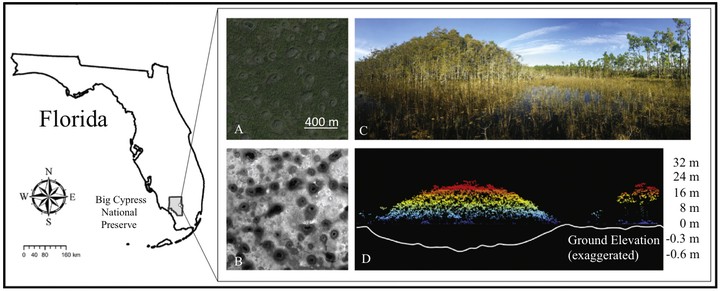Mass balance implies Holocene development of a low-relief karst patterned landscape

Abstract
We constructed mass balances of both calcium and phosphorus for two watersheds in Big Cypress National Preserve in southwest Florida (USA) to evaluate the time scales over which its striking landscape pattern developed. This low-relief carbonate landscape is dotted with evenly spaced, evenly sized, shallow surface de- pressions that annually fill with surface water and thus support wetland ecosystems (e.g. cypress domes) em- bedded in a pine-dominated upland matrix with exposed bedrock. Local and landscape scale feedbacks between hydrology, ecological dynamics and limestone dissolution are hypothesized to explain this karst dissolution patterning. This hypothesis requires the region to be wet enough to initiate surface water storage, which con- strains landscape formation to interglacial periods. The time scale therefore would be relatively recent if creation of the observed pattern occurred in the current interglacial period (i.e. Holocene), and older time scales could reflect inherited patterns from previous inter-glacial periods, or from other processes of abiotic karstification. We determined phosphorus stocks across four landscape compartments and estimated the limestone void space (i.e., wetland depression volume) across the landscape to represent cumulative calcium export. We calculated fluxes in (e.g., atmospheric deposition) and out (i.e., solute export) of the landscape to determine landscape denudation rates through mass balance. Comparing stocks and annual fluxes yielded independent estimates of landscape age from the calcium and phosphorus budgets. Our mass balance results indicate that the landscape began to develop in the early-mid Holocene (12,000–5000 ybp). Radiocarbon dating estimates implied similar rates of dissolution (~1 m per 3000–3500 years), and were in agreement with Holocene origin. This supports the hypothesis that ecohydrologic feedbacks between hydrology and vegetation occurring during the present interglacial period are sufficient to shape this landscape into the patterns we see today, and more broadly suggests the potential im- portance of biota in the development of macro-scale karst features.